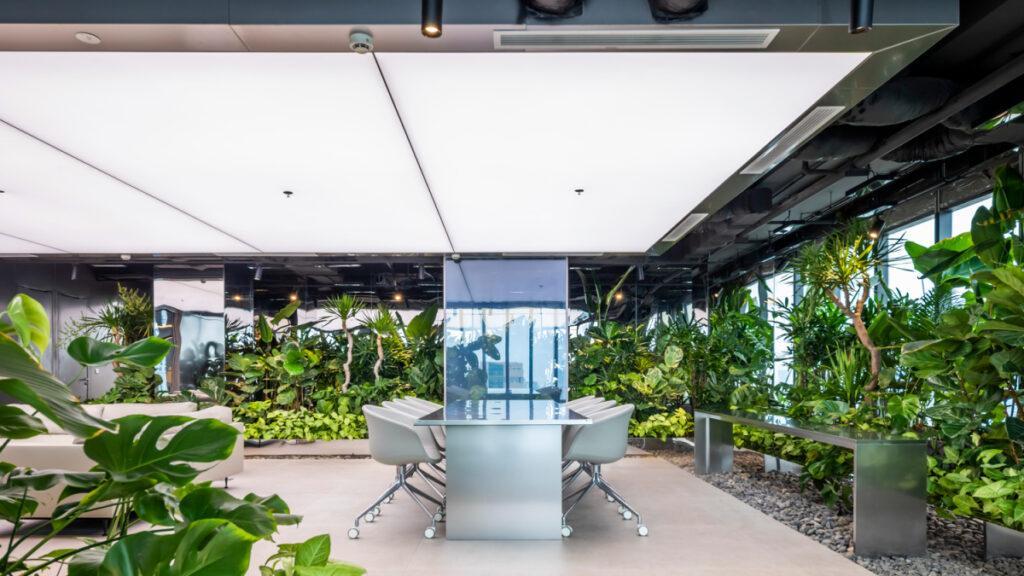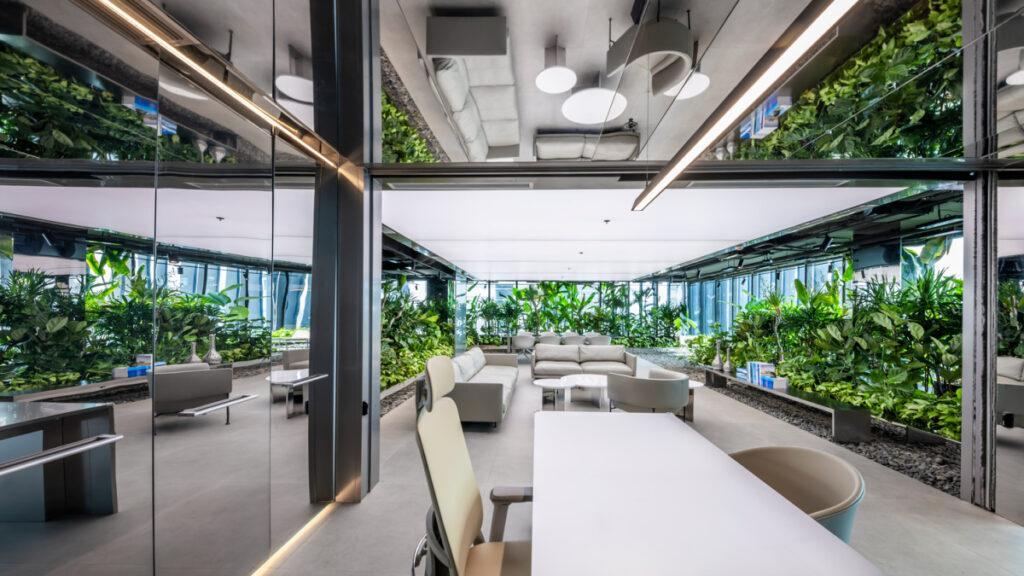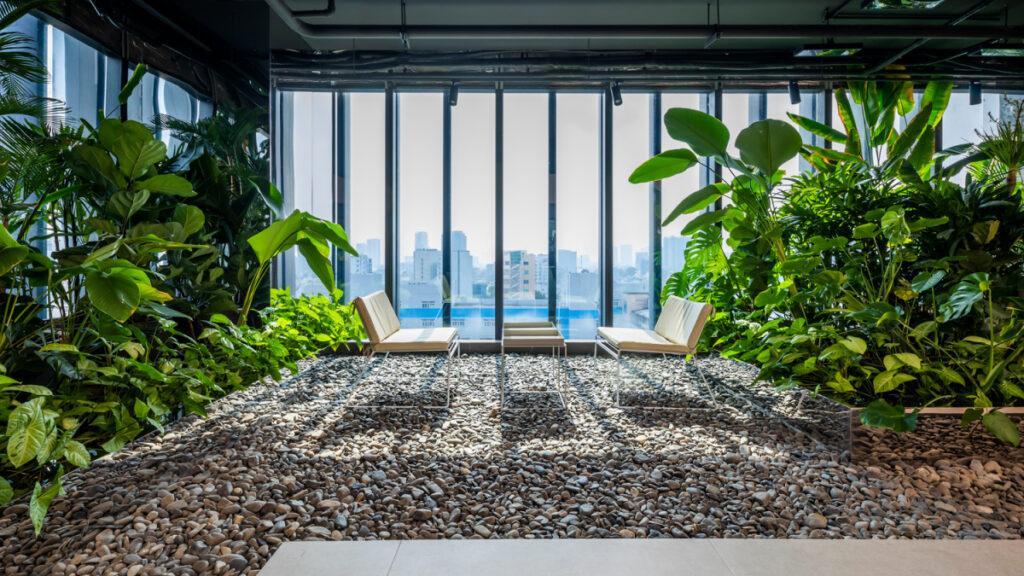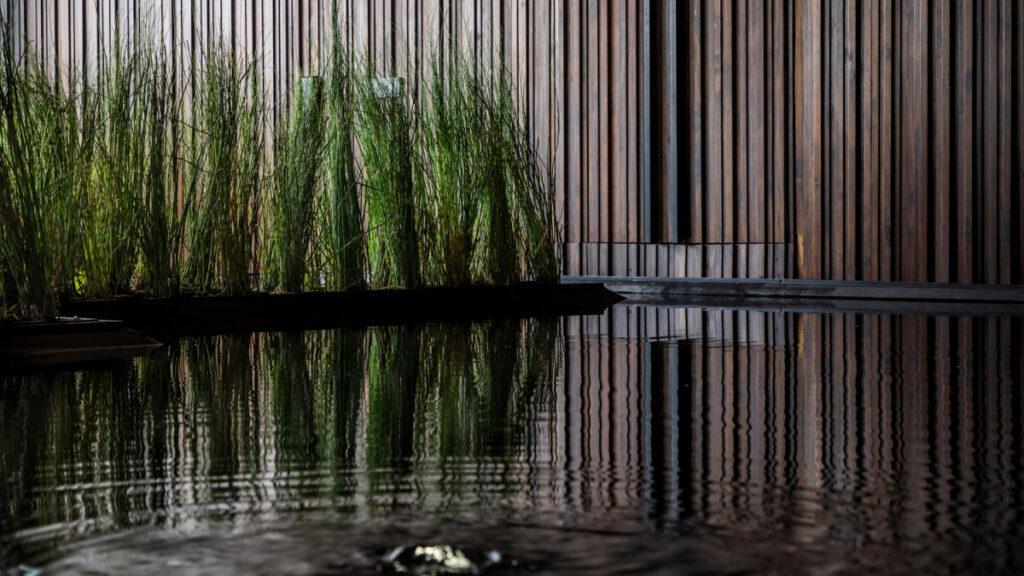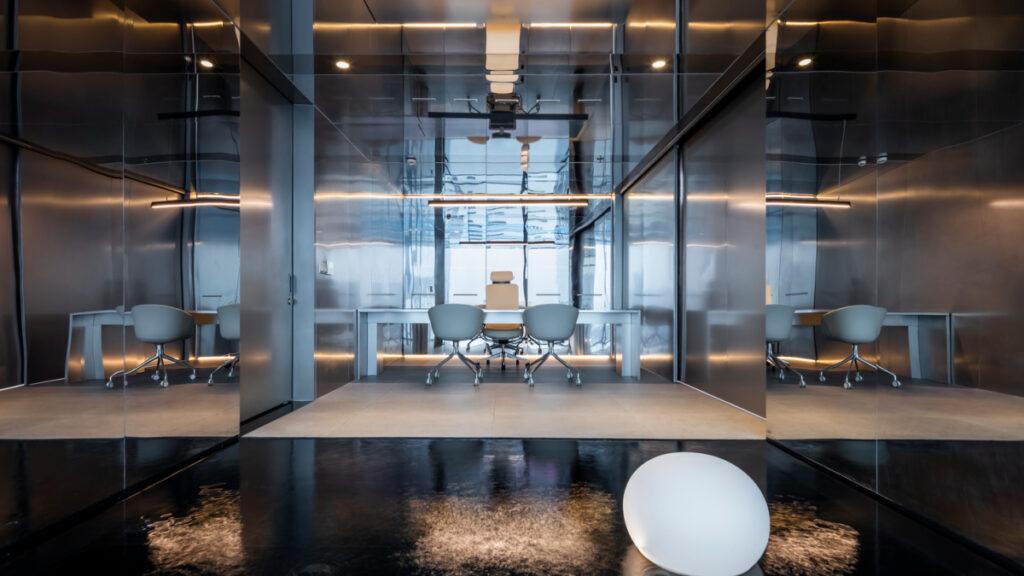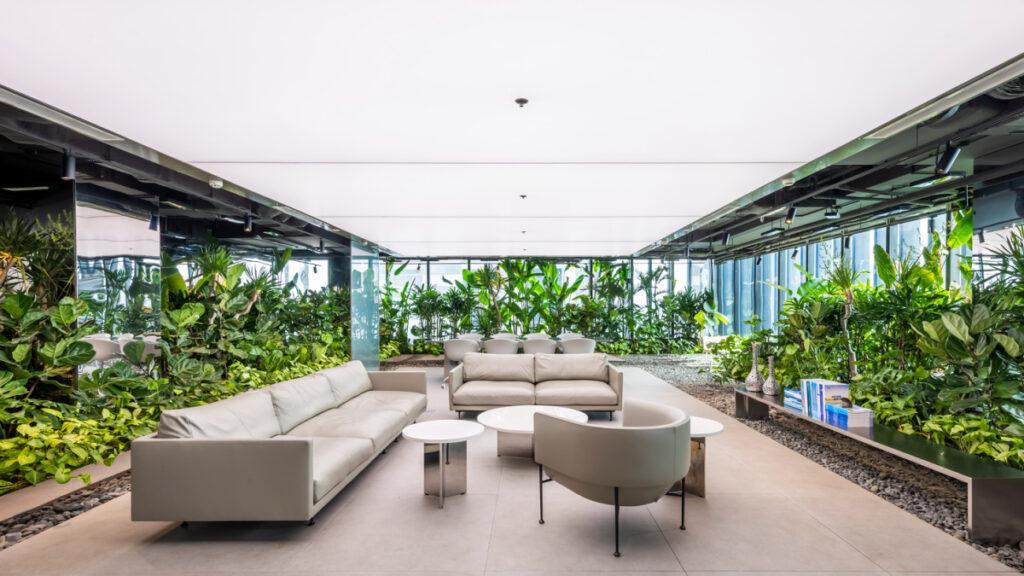Green oasis in concrete tower
In the Vietnamese metropolis Ho Chi Minh City, an increasing number of new office towers are shooting skyward. Local architectural office MIA Design Studio makes sure that nature isn’t forgotten in the process. Even if it has to flourish inside busy interiors.
Ho Chi Minh City may be more familiar to us from its earlier name Saigon (which is still also used today). After the US troops withdrew, in 1976 the former capital of Vietnam was renamed in honour of the country’s head of state Ho Chi Minh, who died in 1969. Over the years, the city has developed into a vibrant trade and transport centre, and it now has around nine million inhabitants.
Pulsating heart of a major city
Steeped in tradition, the city north of the Mekong Delta is divided into 19 urban districts and five rural districts. The twelve inner-city districts have no name, but are simply numbered. Quận (which means city district) 1 is the financial, cultural, political, commercial and touristic centre. Its immediate neighbour, Quận 3, is also part of the city’s pulsating heart.
This is the site of not just the Xá Lợi Pagoda that was opened in 1958, the centre of Buddhism in South Vietnam, but also the city’s largest railway station, Saigon (the most southern in the country). The lively restaurant scene and trendy cafés in Quận 3 attract tourists and locals alike. Its architecture is shaped by villas in French colonial style.
Bring the garden into the office
The planners were able to fulfil the above request with the greatest pleasure: “Why not? We, the children of nature, always fall in love with the beauty of landscape. Coincidentally, we came across a customer with the same passion for plants, flowers, comfort and lightness. From there, together, we created an ‘outdoor office’.”
MIA Design Studio was founded in 2003 in Ho Chi Minh City as an “architecture, interior and landscape design consultant”. The company actually specializes in hospitality and residential projects. Headed by architect Nguyen Hoang Manh, the team has since grown to over 50 employees.
Fluid spaces
On the company’s website, the architects and designers describe themselves as “great admirers of the modernist movement”. They seek to “fulfil the difficult task of rethinking and giving continuity to this iconic generation”. Ultimately, their work focuses especially on “formal simplicity, integration of the interior and exterior into fluid spaces with special attention to the landscape and climate conditions of each project”.
These fundamental conditions include the increasing expansion of office/industrial spaces in major urban regions like Ho Chi Minh City. Equally, a constantly rising demand is causing green and free spaces to disappear. But the architects are convinced that these are “necessary for the living environment. The rapid development of an economic centre of a country produces more and more high-rise concrete blocks in the urban areas. Young businesses and workers spend thousands of hours of intellectual activities in the city in limited blocks of space, and with limited emotions.”
Greenery counteracts restricted emotion
The client behind Mr. Green’s Office wanted to confront these constraining factors to the best of their ability. MIA Design Studio reveals: “We overcame barriers, conceived the idea of building an ‘outdoor office’ in a giant concrete office building block.”
As soon as the elevator doors open, employees and visitors are greeted by a new, surprising world. Business partners are welcomed by seating areas in a little bonsai garden. As symbols of hospitality, these offer rest and recuperation from the hectic pace of the metropolis.
Hospitality instead of hectic city life
Once visitors have been taken inside, the cramped and stifling city feeling disappears when they approach the “outdoor lounge garden”. Meetings and discussions are quite simply held amidst lush greenery – while still being indoors. The designers explain: “This garden has not only the function of creating privacy with the surrounding works, but also the function of regulating light, reducing glare in the afternoon, and shining it directly into the office.”
Moving nature inside a concrete world stems from a fundamental idea developed in the MIA Design Studio, which has won many prizes including a World Architecture Community Award. According to the company: “MIA Design Studio seeks to minimize the negative environmental impact of buildings by efficiency and moderation in the use of materials, energy and development space.”
Enjoying outdoor plants
Sustainable design, they say, “uses a conscious approach to energy and ecological conservation in the design of the building environment. The idea of sustainability, or ecological design, is to ensure that our actions and decisions today do not inhibit the opportunities of future generations.” And also enable them to enjoy plants that thrive not just inside offices, but also outside in actual green landscapes.
Text: Hannes Kropik
Translation: Rosemary Bridger-Lippe
Photos: Hiroyuki Oki
